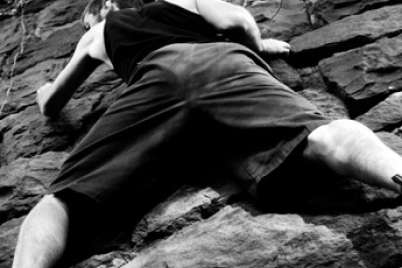
Build your child’s brain by giving them lots of experiences to explore
Our child’s brain is a most amazing organ. Its structure is established in the early years of life, so how can you ensure that your children’s brains are healthy, well-developed, and will last a lifetime?
Building your child’s brain is like building a house. The first five years of a child’s life is a crucial period of time where the foundation of the brain is laid down. The four walls of a house are the four walls of development: cognitive, emotional, social, and physical. All four walls need to be developed equally for the house to be strong and well balanced.
Houses can be built of many materials – wood, brick, stone, even mud or straw. Some materials are more durable and long-lasting than others. What are the building materials of our children’s brains? The simple answer is: experiences.
Children learn by actively using their five senses
Young children learn by doing. They need to be actively involved in seeing, touching, smelling, hearing, tasting; in other words, using all five senses to learn. Each experience that a young child has builds a synapsis or neural connection in their brain. The more experiences, the more synapses. The more meaningful an experience, the more often a child will want to do it again and again. Each time an experience is repeated, the connection becomes stronger and more permanent and the child begins to build confidence and competence.
Third in a series
This series of articles tells the story of a child’s early brain development and how it relates to the development of physical literacy.
- Building your child’s brain is like building a house
- Building your child’s brain through physical literacy
- Build your child’s brain by giving them lots of experiences to explore
- Active play experiences help young children develop physical literacy
- Why relationships are so important when building a child’s brain
- How to support the ‘air traffic control system’ of your child’s brain
Check out this two-minute video from the Centre on the Developing Child at Harvard University for a great, plain-language summary of this process.
The goal of becoming physically literate (the fourth wall of the house) is to develop the motivation, confidence, and competence to move – for a lifetime. This requires that preschool children have experiences with many kinds of activities: on the ground, on snow and ice, in water, and in the air. These experiences should be positive and fun so that children want to do them over and over again (motivation), begin to challenge themselves (confidence), and develop skills that enable them to participate actively (competence). This builds strong permanent brain connections.
Negative experiences are also built into the brain’s structure
Parents want to do the very best for their children – that’s likely why you’re reading this article in the first place! However, it is important to add a word of caution about experiences and early brain development.
Experiences can be both positive and negative and, sadly, both types of experiences are built directly into the structure of a child’s brain.
Experiences can be negative for children and their growing brains if they are stressful, keep a child too busy, or are overwhelming. Through negative experiences, children may learn that they are not good at sports or that they can’t enjoy physical activities. Children may become unwilling to try new things or to challenge themselves to see what their bodies can do.
Positive experiences are fun, age appropriate, and encouraging. They provide opportunities for children to learn to play with others, to benefit from good adult role models, to develop new skills. Be careful not to over-schedule your child – gymnastics on Monday, soccer on Tuesday, and so on. Limit the number of organized and adult-supervised experiences.
Finally, children of all ages simply need time to play – to explore, to be curious, to challenge themselves, to be quiet and dream. So, ensure your child is having fun, doesn’t get too tired, is appropriately dressed for the weather, and is well hydrated. Build only positive experiences of physical activity and literacy into your child’s developing brain!
The next article in the series will further explore positive experiences for children by looking at unstructured and structured play opportunities.





